Aomori and more
- Sort by
- Popularity
- Name
-
Satsuma ware Satsuma yaki
- Ceramic
- Kagoshima
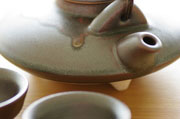
Satsuma ware (called satsuma yaki in Japanese) is a form of porcelain produced in Kagoshima prefecture. There are three types of Satsuma ware: white, black, and porcelain. Then there are six categories: tateno, ryumonji, naeshirogawa, nishimochida…
View more
-
Tsugaru lacquerware Tsugaru nuri
- Lacquerware
- Aomori

Tsugaru lacquerware (called tsugaru nuri in Japanese) is produced around the city of Hirosaki in Aomori prefecture. Lacquerware has been produced in this region since the middle of the Edo period (1603-1868), but it began to be called Tsugaru lacq…
View more
-
Kaba cherrybark woodcrafts Kaba zaiku
- Wood, bamboo crafts
- Akita
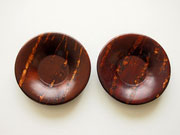
Kaba cherrybark woodcrafts (called Kaba zaiku in Japanese) are a type of wood bark craft produced in the former town of Kakunodate, Akita prefecture. While the character for kaba means birch, for this context the word refers to the bark of wild ch…
View more
-
Odate bentwood Odate mage wappa
- Wood, bamboo crafts
- Akita
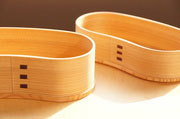
Odate mage-wappa is a bentwood craft produced all over the city of Odate, Akita prefecture. This craft is well-known both domestically and abroad for having a beautiful curved shape and being lightweight. The key feature of Odate bentwood is the b…
View more
-
Kawatsura lacquerware Kawatsura shikki
- Lacquerware
- Akita
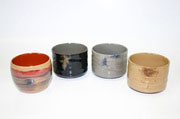
Kawatsura lacquerware (called Kawatsura shikki in Japanese) is produced in the town of Kawatsura in the southern part of Akita prefecture. Everyday use items like bowls and trays have been produced here for a long time. Kawatsura lacquerware has e…
View more
-
Boshu uchiwa fans Boshu uchiwa
- Other crafts
- Chiba
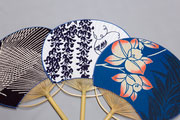
Boshu uchiwa is a type of fan made in the areas around the cities of Tateyama and Minamiboso in Chiba prefecture. This is one of Japan’s big three uchiwa types, with the other two being Marugame (Kagawa prefecture) and Kyo uchiwa (Kyoto prefecture…
View more
-
Sekishu traditional Japanese paper Sekishu washi
- Traditional Japanese paper
- Shimane
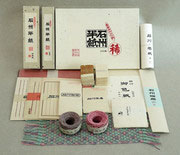
Sekishu washi is a traditional Japanese paper produced in the Iwami region of Shimane prefecture. As an ancient craft, it has a history of around 1300 years. The name Sekishu is found in writings from the Heian period (794-1185). There is also a s…
View more
-
Tendo Japanese chess pieces Tendo shogi koma
- Other crafts
- Yamagata
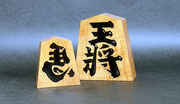
Tendo Japanese chess pieces (called Tendo shogi koma in Japanese) are made in the cities of Tendo, Yamagata, and Murayama in Yamagata prefecture. Production is thought to have begun in Tendo back during the Edo period (1603-1868) and now the city …
View more
-
Yamagata cast iron Yamagata imono
- Metal works
- Yamagata
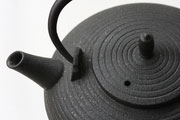
Yamagata cast iron (called Yamagata imono in Japanese) is produced in the city of Yamagata, Yamagata prefecture. At first, metal fittings, Buddhist statues, and daily use items were made. Then, as skills and techniques were developed, iron kettles…
View more
-
Unshu abacus Unshu soroban
- Writing tools
- Shimane
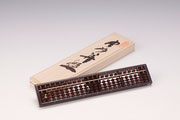
Unshu abacuses (called Unshu soroban in Japanese) are produced in the town of Okuizumo, Shimane prefecture. Japanese abacuses are traditional tools that use columns lined with beads that are quickly moved with the fingers to do calculations. They …
View more
-
Oitama tsumugi silk Oitama tsumugi
- Woven textiles
- Yamagata
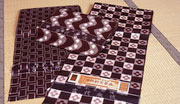
Oitama tsumugi is a silk fabric produced in the Yonezawa, Hakutaka and Nagai regions of Oitama in southern Yamagata prefecture. The area was well-known for producing and exporting ramie, a tall plant of the nettle family that has been used to make…
View more
-
Honba oshima tsumugi silk Honba oshima tsumugi
- Woven textiles
- Kagoshima
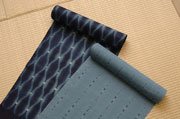
Honba Oshima Tsumugi is a fabric made on the island of Amami, Kagoshima prefecture. It is one hundred percent plain silk that has been dyed and made on handlooms like shime-bata or te-bata. This textile has deep, muted tones as it is dyed with ye…
View more
-
Iwami ware Iwami yaki
- Ceramic
- Shimane
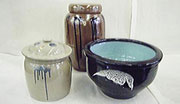
Iwami ware (called Iwami yaki) is a type of pottery produced around the city of Gotsu, Shimane prefecture. Iwami ware is strong, has low water absorbency and is resistant to salt, acid, and alkali which makes it suitable for storing pickled plums …
View more
-
Kawanabe Buddhist altar Kawanabe butsudan
- Household Buddhist altars
- Kagoshima
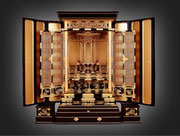
Kawanabe Buddhist Altars (called Kawanabe Butsudan in Japanese) are made in the Kawanabe area of Minamikyushu, Kagoshima prefecture. There is a specific type of altar called gamado that is unique to this craft. Gama means cave in the Kagoshima dia…
View more
-
Uetsu tilia bark cloth Uetsu shinafu
- Woven textiles
- Yamagata
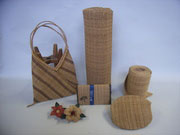
Uetsu Shinafu is a textile produced in the area of Sekikawa, Tsuruoka, Yamagata prefecture, and Sanpoku, Murakami, Niigata prefecture. The names of the neighboring prefectures of Yamagata (Uzen) and Niigata (Echigo) are combined and called Uetsu, …
View more
-
Akita cedar tubs and barrels Akita sugi oke taru
- Wood, bamboo crafts
- Akita
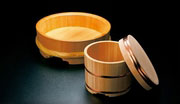
Akita-sugi Oke Taru are handmade Akita cedar tubs and barrels produced from locally grown cedar timber in the cities of Odate and Noshiro of Akita Prefecture since around the late Heian period (11th century). Products made of straight grain wood w…
View more
-
Yamagata Buddhist altar Yamagata butsudan
- Household Buddhist altars
- Yamagata
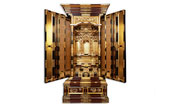
Yamagata Butsudan are Buddhist altars mainly made in Yamagata City, Tendo City, Obanazawa City, and Sakata City, Yamagata Prefecture, which distinguishes the prefecture as the largest center of altar production in the Tohoku region. Kichibei HOSHI…
View more
-
Izumo stone lanterns Izumo ishidoro
- Stonework
- Shimane
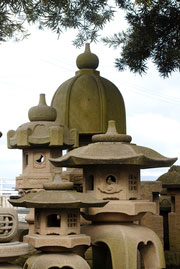
Izumo stone lanterns are stone lanterns produced in the city of Sakai Minato in the Tottori prefecture, and in the cities of Matsue and Izumo in the Shimane prefecture. They are made of Kimachi stone, fine-grained tuffaceous sandstone quarried fro…
View more
-
Chiba Artisan Tools Chiba Koshogu
- Metal works
- Chiba
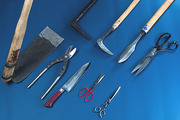
Chiba Artisan Tools are cutlery and hand tools made in the Boso Peninsula of Chiba prefecture, using traditional techniques. Their main products are sickles, hoes, knives and western style scissors. As iron sand was mined in the Boso Peninsula fr…
View more
- 1

































































































































































































































































































